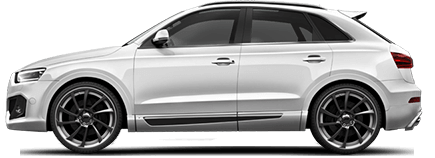- Exterior Inspection: While starting the inspection process for exporting a car from Dubai, begin with an exhaustive examination of the car’s exterior. Examine the body for any indications of harm, rust, or abnormalities in the paint. Evaluate the condition of the tires, guaranteeing they have adequate track profundity and are liberated from apparent harm. Look at the lights, including headlights, indicators, and brake lights, to guarantee they are completely useful. A comprehensive exterior inspection sets the establishment for assessing the general condition of the vehicle you want when exporting a car from Dubai.
- Under the Hood: Pop the hood and dive into the core of the vehicle. Assess the engine for any releases, unpredictable commotions, or indications of mileage. Take a look at the liquid levels, including oil, coolant, and brake liquid, to measure the car’s support history. Look at the battery for any erosion and evaluate the general neatness of the engine straight. A fastidious under-the-hood inspection gives bits of knowledge into the car’s mechanical well-being.
- Interior Examination: Moving to the interior, investigate the condition of the upholstery, dashboard, and controls. Check for any impossible-to-miss smells, which could show issues, for example, water harm or shape. Evaluate the usefulness of the cooling, warming, and theater setups. Guarantee that every single electronic component, including windows, mirrors, and seat changes, is in appropriate working request—the interior inspection plans to ensure an agreeable and completely practical driving experience.
- Test Drive: No inspection is finished without a comprehensive test drive. Focus on the vehicle’s handling, controlling responsiveness, and brake execution. Tune in for any strange commotions during speed increase and braking. Assess the transmission’s perfection and responsiveness. A test drive permits you to encounter the car in real life and can uncover unobtrusive issues that may not be obvious during static inspections.
- Documentation and Legalities: Before settling your decision to import a UAE car, completely survey all pertinent documentation. Guarantee that the vehicle accompanies a total service history, enlistment reports, and some other desk work expected for importation. Check the vehicle’s recognizable proof number (VIN) and cross-reference it with the given records. Get to know the lawful necessities for importing a car into your country to keep away from any unanticipated confusion.
- Suspension and Undercarriage: While inspecting the suspension and undercarriage of the car, search for indications of rust, particularly assuming the car has been exposed to salt or water, which can speed up erosion. Check for any apparent oil or liquid breaks, which can show issues with the shocks, swaggers, or different parts. Focus on the condition of the suspension bushings, which can wear after some time, influencing the car’s ride quality. Assess the undercarriage for marks or harm, which might have happened assuming the vehicle hit garbage or a harsh landscape. A comprehensive inspection here guarantees a smooth and safe ride.
- Braking System: Investigate the braking system carefully when you go for a Dubai car for sale export. Analyze the brake cushions and rotors to decide their thickness. Meagre brake cushions might require substitution soon. Take a gander at the brake lines for indications of wear, consumption, or holes. An exhaustive inspection of the braking system helps ensure that you won’t confront unforeseen brake issues sooner rather than later for Dubai car for sale export.
- Wheels and Alignment: Look at the condition of the wheels, edges, and the vehicle’s alignment. Lopsided tire wear might propose misalignment or suspension issues. Turned tires can show ordinary upkeep, while lopsided wear might infer that the vehicle hasn’t been as expected and cared for. Additionally, survey the condition of the edges for any breaks or curves, as harmed edges can be expensive to supplant.
- Exhaust System: Look at the exhaust system, beginning from the exhaust complex down to the tailpipe. Search for rust, breaks, or openings in the lines and suppressor. Rust is normal; however, unnecessary rust or openings can influence the car’s emissions and eco-friendliness. Tune in for strange commotions when the car is running, as these can be indications of exhaust system issues. A well-kept-up with an exhaust system guarantees ideal vehicle execution.











